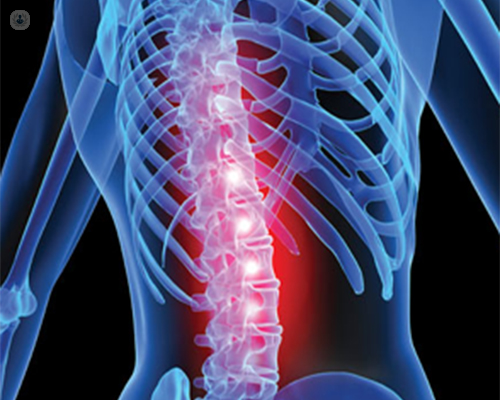Minimally invasive surgery - a safer technique for spine surgery
Written by:Minimally invasive spinal surgery is a relatively new technique in spinal surgery. Approaches such as anterior and posterior minimally invasive surgery lead to improved recovery times, less tissue trauma, and less chance of complications for the patient. Here, leading consultant orthopaedic surgeon and specialist in minimally invasive surgery, Mr Sean Molloy explains more about this ideal technique in spinal surgery.

What is minimally invasive surgery?
Minimally invasive surgery is an ideal technique in spinal surgery. What is meant by minimally invasive surgery is smaller incisions rather than larger and more invasive incisions.
The benefit of the minimally invasive technique is that recovery time for the patient is reduced, there is less tissue trauma, the patient does not lose as much blood, and there is less chance of complications.
What is meant by less tissue trauma is the use of a muscle splitting, rather than muscle cutting approach. There are different ways in which the surgeon can choose to approach minimally invasive surgery.
Anterior minimally invasive spinal surgery
Using the anterior minimally invasive technique, the spine can be approached surgically from the front.
If the spine is approached from the front (also called the anterior approach), then the abdominal wall muscles can be split, the damaged discs can then be removed and replaced with metal blocks that cause the bones to fuse. There is no long term damage to the muscle that has been split and retracted for the minimally invasive anterior procedure.
Posterior minimally invasive spinal surgery
The posterior procedure can once again be performed by operating between muscles, rather than cutting through the muscles themselves.
Implants can be inserted via computer navigation, which enables us to get a complete visualisation of the bone and spinal cord on a monitor throughout the entire operation. This means that large retractors are not needed, as was the case in the past, and there is less tissue trauma as a result. This surgical approach is safer, as it allows easy insertion of screws and application of rods, to once again ensure a good fusion.
Spinal navigation has been a significant advance for the facilitation of minimally invasive spinal surgery.
Reduced recovery time
Because minimally invasive techniques do not disturb soft tissue and muscles in the way that traditional spine surgery does, generally these procedures can reduce post-operative discomfort, and the amount of time spent in post-operative recovery.
Returning to normal daily activity is a process which varies in each individual case. After spinal fusion, it takes time for the fusion to take and it is important to keep the spine straight. Patients will be shown how to move and reposition to aid this.
After surgery, a patient is monitored to ensure recovery is progressing as it should.


